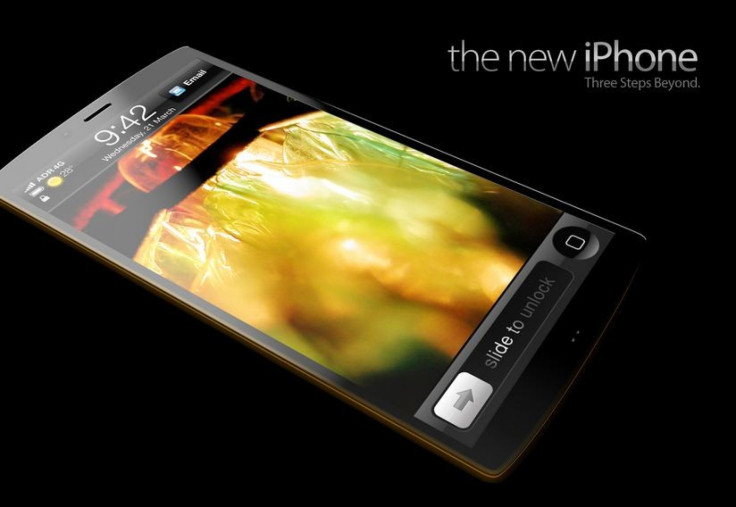Will iPhone 5 Feature 4-Inch Display, Metallic Back And Smaller Dock Connector?

Over the past few months, the tech world has been abuzz with rumors that Apple's upcoming iPhone model, aka iPhone 5, will follow rival Android smartphones, sporting a bigger screen than its predecessors. Adding more credibility to that speculation, a new report has suggested that the next iPhone will come with yet another glass-bodied design, sporting a bigger 4-inch display.
Jeremy Horwitz of iLoungue apparently learned that the next iPhone iteration won't have the rumored teardrop design, but instead follow a more conventional form factor similar to both the iPhone 4 and 4S. However, in terms of the overall look, the sixth generation iPhone would be longer and thinner than the earlier models.
Approximate measurements are 125mm by 58.5mm by 7.4mm-a 10mm jump in height, nearly 2mm reduction in thickness, and virtually identical width, Horwitz said.
According to him, sources revealed that Apple would include a flat metal panel at the center of the rear casing of the device. In addition, the next iPhone is also expected to be made partially from Gorilla Glass 2, which can be manufactured thinner with identical strength to the earlier iPhones' Gorilla Glass, or at the same thickness with greater strength.
The change in height will include a lengthening of the prior 3.5 screen to roughly 4 on the diagonal, meaning Apple will have to modify the aspect ratio in the new iPhone for the first time after the introduction of the first generation of iPhone in 2007. Apple would do that by adding additional pixels to the top and bottom of the screen, the report added.
Horwitz said that such a change took place between the fourth and fifth generations of the iPod nano, without any impact on third-party software. However, according to him, it will make an impact this time.
But another report in iDownloadBlog disagreed, saying that a taller display would prove problematic because apps are optimized for the iPhone's 3:2 display, but if Apple really switch to a widescreen 16:9 orientation, they could use the extra space to, say, render banner notifications unobtrusively, right above the running app.
Another solution: drop the physical home button and replace it with a virtual counterpart occupying extra space at the screen bottom, as shown in some Liquidmetal iPhone 5 concepts, the report said.
Coming back to the leaked information provided by iLoungue, the anonymous sources also claimed that Apple is going to introduce a new Dock Connector on the new iPhone, which would be around half the size of the current connector while having fewer pins. The report explained:
It's believed to have fewer pins than the prior 30-pin Dock Connector, perhaps only 16, and the shape of the hole is apparently closer to a pill shape than the prior rounded rectangle. It will be used on all upcoming devices, including an update to the iPod touch that's expected this year, and will almost certainly feature a similarly updated screen and CPU.
Taiwanese newspaper DigiTimes recently reported, citing sources in Apple's supply chain, that the next iPhone would feature in-cell touch panels, making it a thinner and lighter device altogether. The in-cell touch panels basically put together touch functionality with the TFT (thin-film transistor) manufacturing process, which helps get rid of the need for additional glass.
According to KGI Securities analyst Ming-Chi Kuo, using the in-cell touch panels could result in thickness savings of as much as 0.44mm by removing the separate touch sensor layer and one layer of adhesive, Apple Insider reported.
The current iPhone 4S is 9.3mm thick, and Kuo said that Apple wanted to break the 8mm mark with its next iPhone. He predicted that the depth of the next iPhone would measure 7.90mm.
Other features that are most likely to be incorporated in the upcoming iPhone model include a 4-inch Retina display, an A5X Variant chip, 1GB RAM, iOS 6, 4G LTE technology, Near Field Communication (NFC) technology, improved Siri, liquidmetal casing, an 8 megapixel (or even higher) rear camera, a 2 megapixel front-facing camera for video chatting and a much-improved battery life.
Apple is expected to unveil the next generation iPhone later this year, with many analysts betting on the September-October timeframe for the release.
© Copyright IBTimes 2024. All rights reserved.





















